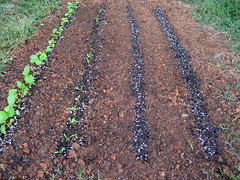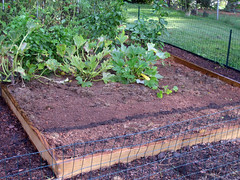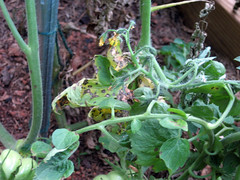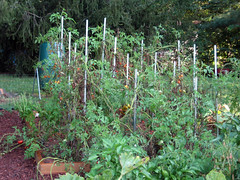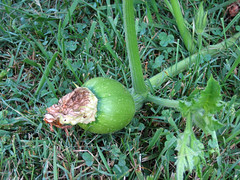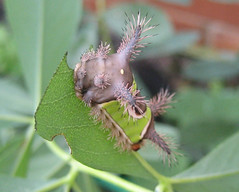Hot Peppers
We made a lot of salsa last year, and we used a lot of hot peppers. We didn't grow hot peppers last year, so we had to buy them from the grocery store whenever we wanted to make salsa. We learned quickly that you can't depend on grocery store hot peppers. First, you never know what kind they will have, and second, you never know how fresh or ripe they will be. Peppers lose their fire as they age, whether they are still on the plant or have been picked. We had to settle for flimsy peppers that were far too mild most of the time. So this year, we decided to grow our own, because we LOVE salsa!!

I ordered the fire mix from Park's Seeds, and sowed the seeds indoors in early February. Peppers are slow growers (harvest is 70-90 days from setting out transplants), so you need to plan far in advance of the growing season. Peppers are also very sensitive to cold, so always wait until the temperature remains above 50 degrees at night before planting. I planted our hot peppers in a pot on the patio to ensure they didn't cross pollinate with the regular green peppers in the garden. If you plant them too close, your green peppers will be warmer than intended! Peppers prefer a full sun location where they can soak in the rays for 6-8 hours a day and a steady supply of water. (The peppers are in a cream colored pot on the right in the photo below.)
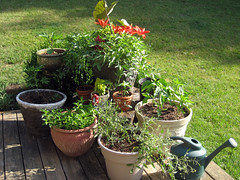
The fire mix is a combination of 6 types of peppers; Anaheim TMR, Ancho 101, Garden Salsa Hybrid, Habanero, Jalapeno M, and Super Cayenne II Hybrid. The problem is that all the seeds come in the same packet, and they are not color-coded, so you don't know which peppers are which. I sowed enough seeds for 7 plants, but I had no way of knowing whether they were all the same or different! Pepper seeds all look the same to me. We have been harvesting peppers for several months now, and honestly, the peppers look identical, and do not resemble the photos on the website at all, so I have no idea what kind of peppers we are eating! It's all good though, because we have had a constant supply of crisp hot peppers for our salsa making.
As a side note, some seed retailers, like Renee's Garden, are kind enough to color-code seeds when they package a combination in the same packet. I prefer when they are color-coded so I actually know what I am growing!
Labels: "hot peppers", asheville, gardening, vegetables




